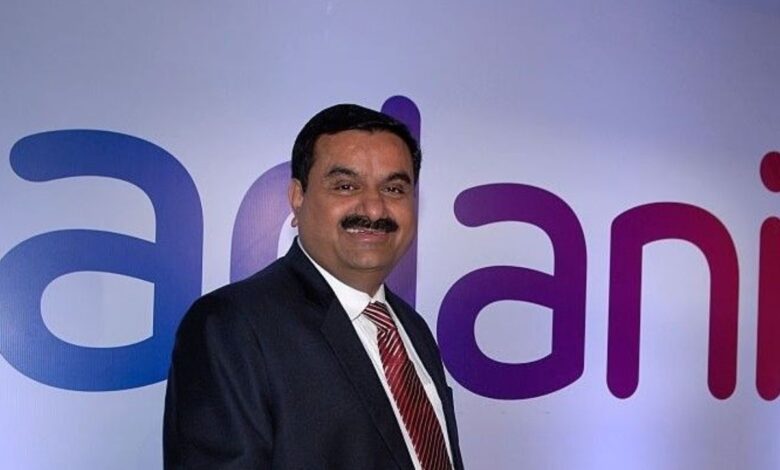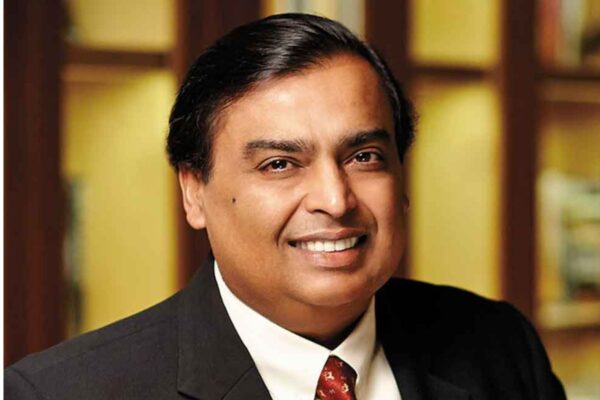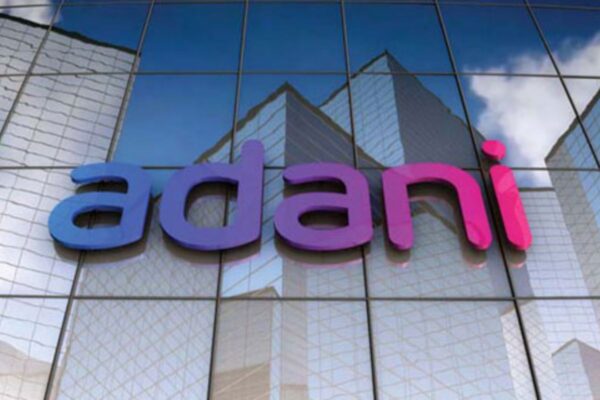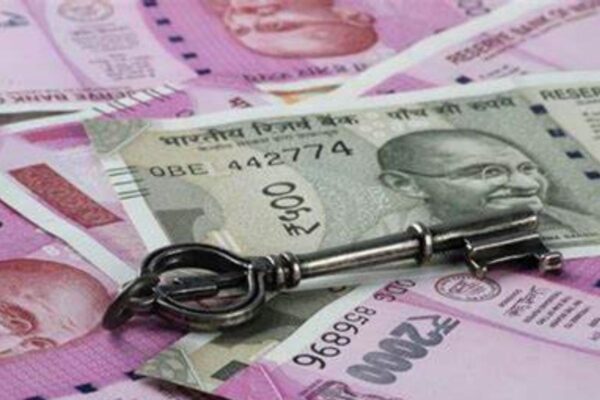Adani Surpassed Bill Gates in Richest List & India Surpassed Nigeria in Extreme Poverty, More Acche Din to Come

Gautam Adani surpasses Microsoft’s Bill Gates to become the fourth-richest person in the world.
Bill Gates’ net worth of $104.6 billion was eclipsed by Gautam Adani and his family at $116.4 billion.
According to Forbes’ Real-Time Billionaires List, Indian billionaire Gautam Adani surpassed Microsoft founder Bill Gates to become the fourth richest person in the world. Bill Gates’ net worth of $104.6 billion was eclipsed by Gautam Adani and his family at $116.4 billion. Elon Musk, the founder of Tesla and SpaceX, is currently the richest person in the world with a net worth of $235.8 billion.
According to Forbes, Jeff Bezos, the creator of Amazon, and Bernard Arnault & Family come in second and third place, respectively, with net worths of $156.2 billion and $148 billion.
Second-richest person in India Reliance Industries’ chairman and managing director Mukesh Ambani, who has a net worth of Rs 90 billion, is ranked tenth on the list.

The chairman of the Adani Group, which owns the largest thermal power generator and private sector port company in India, is Gautam Adani.
Adani Enterprises, Adani Ports and SEZ, Adani Green Energy, and Adani Total Gas are only a few of the Adani Group’s seven publicly traded firms in India. Adani Power and Adani Transmission.
The corporation is involved in the field of energy, ports and logistics, mining and resources, gas, aviation, defence, and aerospace.
Adani Group has lately demonstrated its interest in the telecom industry in addition to these other industries by taking part in the bidding process for the 5G spectrum auction scheduled for later this month.
While steadfastly pushing through with his contentious Carmichael coal project in Australia, Adani has been aggressively growing his conglomerate, adding ports, airports, data centres, and coal mines in India.
To celebrate his 60th birthday last month, Adani and his family promised to donate Rs 60,000 crore to a number of charitable organisations, according to news agency Bloomberg.
Adani at first
No Indian tycoon had ever reached such a high point in the wealth rankings before to Adani. According to Forbes, the authority on wealth measurement, Mukesh Ambani, who held the title of richest Indian for a lot of years before being surpassed by Adani, is currently in ninth place internationally in the wealth standings and is valued at $90.6 billion.
With a net worth of $99.3 billion, Warren Buffett, another consistent star at the top of the wealthy lists since the early 1990s, is currently ranked seventh. The enormous charitable donations made by the chairman of Berkshire Hathaway have also reduced his wealth; he has given away $35.7 billion and $4 billion in the past month alone. He intends to donate 99 per cent of his wealth when he passes away.
There are just six cents-billionaires on the Forbes Real Time Billionaires’ List who are now worth more than $100 billion, and they are all men.
The wealth of the 60-year-old Adani has increased astronomically over the past 12 months. He was listed as having a net worth of $90 billion in the Forbes India Rich List that was released in early April. In a little more than three months, he has increased by almost $25 billion.
The Covid-19 pandemic was at its worst in 2021, when Adani was also rapidly expanding. Forbes estimated his value at $74.8 billion in April 2021, compared to a relatively low $25 billion a year earlier. And his value in 2018 was only $11.9 billion.

Thanks to the consistently rising share prices of various group firms, Adani’s wealth has been climbing to stratospheric heights.
Adani Enterprises, his flagship business, just hit a record high, as did Adani Transmission, another business in the power sector.
Another firm, Adani Green, has seen its share price rise to record highs. From Rs 942 in July 2021 to Rs 2,911 in April, it increased. From that height, it dropped to Rs 2,119 a few days ago.
The top tier of Adani
As the fourth-ranked company, Adani now trails worldwide household names like Elon Musk, the richest man in the world, who is still worth an astounding $253.4 billion despite the fact that his Tesla shares have dropped more than 30% for the year.
The second-richest person in the world is LVMH’s Bernard Arnault, whose net worth is now estimated to be $156.3 billion. Another well-known person in the world, Jeff Bezos of Amazon, who has a net worth of $148.1 billion, is in third place.
The tycoon’s influence in the Indian industry has also grown significantly in the previous 12 months. As a result of his ownership over Mumbai and six other significant airports, Adani Airports Holdings is able to serve a sizable portion of India’s air travellers.
The largest SEZ in India, Mundra, as well as nine other ports, are under his Adani Ports and Special Economic Zone administration.
In addition, the Adani company has recently joined the telecom market and is competing to acquire a telecom spectrum. Additionally, it established a joint venture with Total of France.
The percentage of Adani Total Gas is also skyrocketing. It started off at Rs 1,650.35 on March 14 and increased to Rs 2,291.60 on June 24. It climbed further higher to Rs 2,870.50 on Friday. The corporation already has contracts in place to transport gas across the nation.
Adani has increased his generosity, joining billionaires like Gates, Buffett, and others. The self-made Adani promised to donate $7.7 billion to his Adani Foundation to support healthcare, education, and skill development to commemorate his 60th birthday last month.
According to the most recent Bain & Company India Philanthropy Report, average donations made by Indian philanthropists across wealth levels have generally lagged behind those made by Americans. Bain attributes some of the disparity to the tax benefits that charity giving offers to donors in other nations. India doesn’t provide these advantages.
Gautam Adani has never slowed down or stopped making investments in India.
The overall market capitalization of the Adani Group this year crossed $200 billion, according to Gautam Adani, Chairman of the Adani Group.
“We were able to raise billions of dollars from international markets, which is clear evidence that people are optimistic about India’s and Adani’s future growth. The globe has acknowledged our accomplishment and expansion.
At this time, numerous foreign governments are asking us to operate in their regions and contribute to the development of their infrastructure. As a result, we also established the groundwork for a larger development outside of India in 2022 “At Adani Enterprises Limited’s annual general meeting (AGM), he remarked (AEL).
According to Gautam Adani, no other country is as well-positioned as India, which is why the Adani Group’s success is dependent on its alignment with India’s growth story.
“The best illustration of how confident and upbeat we are about the future is our investment of $70 billion to support India’s green transition. We are currently one of the world’s largest solar energy developers. Our strength in renewable energy sources will be very helpful in our attempts to make green hydrogen the fuel of the future.
We are leading the fight to reduce India’s reliance on foreign oil and gas imports and increase the likelihood that it will eventually become a net exporter of clean energy.
“We now have a sizable global portfolio of renewable energy sources, but during the past 12 months, we have also achieved outstanding success in a number of other areas. We swiftly attained the title of largest airport operator in India.
We are currently involved in the related businesses of developing acropolises and establishing regionally based economic hubs near the airports that we currently operate. By obtaining some of the biggest road construction projects in the country and expanding our already sizable market share in industries like ports, logistics, transmission, and distribution, city gas, and piped natural gas, we continue to develop as the builders of India’s infrastructure.
We are now the biggest FMCG firm in the nation thanks to the successful IPO of Adani Wilmar. We are now India’s second-largest cement manufacturer thanks to the acquisition of Holcim’s assets in that nation, which included two of the most recognisable brand names there: ACC and Ambuja Cements.
This is a perfect illustration of how our adjacency-based business model operates. We have also entered markets in industries like data centres, digital super applications, industrial clouds, metals, and minerals, all of which are in line with the government’s goal of an Atmanirbhar Bharat, says the official.
According to Gautam Adani, the group’s increasing market capitalization has been backed by a strong and consistent increase in our cash flows.
EBITDA increased by 26 per cent as a result of our focus on operational excellence throughout our business and the accretive capacity expansion. Portfolio EBITDA was 42,623 crores rupees. The growth we experienced was varied and was seen across all of our businesses.
Our utility portfolio increased by 26%, our transport and logistics portfolio increased by 19%, our FMCG portfolio increased by 34%, and our incubator company, Adani Enterprises Limited, increased by 45%. There is no other company like AEL, and we plan to capitalise on this even more.
The Group has a solid platform for the ongoing creation of new businesses thanks to the rapid growth of AEL for yet another prosperous decade.
Even if we may be happy when we reflect, the true momentum is just now starting to build. We have managed to grow into India’s largest integrated infrastructure company over the past 20 years thanks to our quick expansion into related industries.
As a result, we have evolved into an integrated “platform of platforms” that combines an energy platform with a logistics platform, giving us access to the Indian customer on a previously unheard-of scale. For the foreseeable future, there is no other firm that I am aware of that has such a novel business strategy and possible access to an infinite B2B and B2C market.
India has overtaken Nigeria in terms of poverty.
India now has more people who live in extreme poverty than Nigeria did previously.
This was stated in a recent update of the World Poverty Clock, taking into account the economic impact of the COVID-19 pandemic.
The World Poverty Clock is an online application that delivers real-time data on poverty across nations while also tracking the progress made in eradicating poverty on a regional and global scale.
According to its statistics, persons who make less than N800 (less than $2) a day are considered to be extremely poor.
When compared to India’s 73 million, Nigeria had roughly 87 million people living in extreme poverty in 2018.
Approximately 83 million Indians, or 6% of the nation’s 1.3 billion people, are expected to live in extreme poverty in 2022, according to the latest data.
According to WPC, 70 million people in Nigeria—or 33% of the country’s 200 million+ residents—live in extreme poverty.
More than 80 million Nigerians, according to the National Bureau of Statistics, NBS, live in extreme poverty as of 2020. (on a dollar per day).
Can Nigeria surpass India in wealth?

In terms of population, India may be the largest nation on earth. I now realise that China has a slightly larger population than India, but China’s population has essentially stalled and may soon begin to drop, pushing India to the top spot.
However, Nigeria is the most populous nation in Africa. Indeed, it is clear that both nations are home to the greatest concentration of people on their respective continents.
We will compare the wealth of the two nations using their expected population increase in order to determine which is richer. We also examine the present GDP and the factors that contribute most to it. Finally, we will examine the resources that are available to both nations, which will help us determine which nation has greater wealth.
India currently has a population of 1.38 billion people, which is almost on the verge of overtaking China. By the year 2050, India is anticipated to have a population of 1.6 billion, making it the most populous nation in the world.
On the other side, there are just over 200 million people living in Nigeria. By 2050, this number is anticipated to increase to 400 million. In other words, these figures indicate that there is a significant population gap between India and Nigeria, and it is unlikely that Nigeria would ever be able to overtake India in terms of population.
Therefore, it is evident that India is a nation that, in theory, should be able to produce more wealth than Nigeria. And India has the advantage in this aspect.
It is in the top 10 economies in the world as a result. However, India’s GDP per capita of 1,900 USD is just marginally higher than Nigeria’s GDP per capita of 2097 USD.
The population of Nigeria is therefore, somewhat more productive than the population of India. India, however, is far ahead of Nigeria as compared to the share of what they can create RIGHT NOW.
Mineral resources are abundant in Nigeria and India. The fourth-largest coal reserves in the world are in India. They use a lot of coal to produce its energy, and this contributed to their reluctance to sign a clean energy deal at COP26. India also possesses the seventh-largest reserve of manganese ore.
The Dangote refinery, which is currently being constructed in the Lekki Peninsula of Lagos State, will be the largest oil refinery in the world. Nigeria, on the other hand, is an oil giant.
Although it is a common misconception, the Nigerian economy is not primarily driven by oil. In actuality, the agriculture industry, which contributes around 24% of Nigeria’s GDP, is what drives the country’s economy.
Oil has traditionally been a source of trade between India and Nigeria, and in 2020, Nigeria would export 4.56 billion US dollars’ worth of crude oil to India.
India has a services-based economy because of the large contribution of its services sector to the country’s economic strength. The services sector of the Indian economy includes a wide range of industries, including finance, real estate, professional services, public administration, defence, and other services like trade hotels, transportation, communication, and broadcasting. In the fiscal year 2018–19, this sector alone contributed a staggering 54.3 per cent of the country’s GDP.
Nigeria has an advantage when it comes to natural resources because oil is much easier to turn into money than coal (which India has an abundance of). However, India is definitely ahead in terms of human resources, therefore it is reasonable to say that neither country necessarily has more resources than the other,
“If we compare the two nations based on the current state of their resource bases, India is by far the wealthier of the two. India still has a far bigger GDP even if Nigeria has a higher GDP per capita. India has a larger population density, which significantly boosts its economy’s services industry. Furthermore, compared to natural resources, which will eventually run out, human resources are a considerably more reliable statistic.
edited and proofread by nikita sharma


